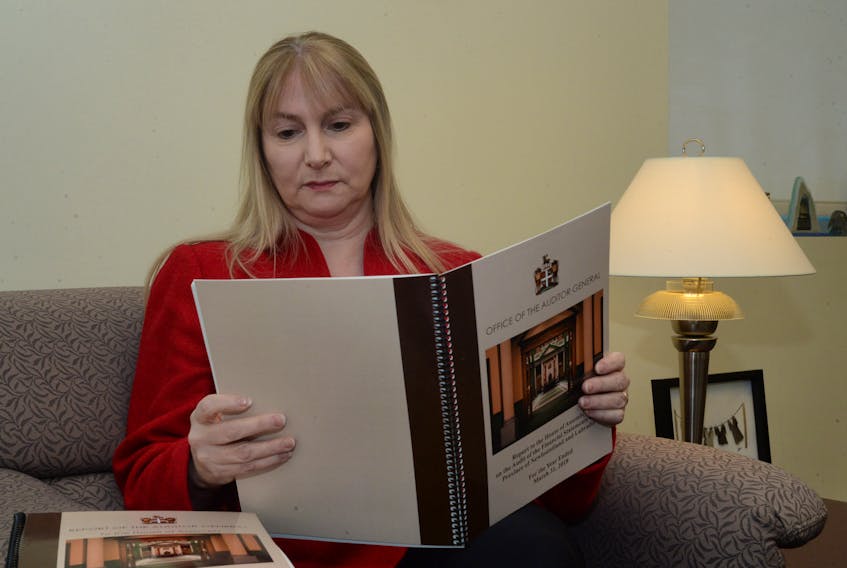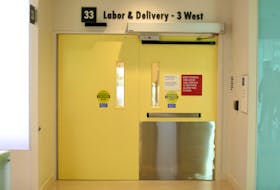The total debt of Newfoundland and Labrador has hit its all-time high: $14.7 billion and growing.
On Friday, auditor general Julia Mullaley released the audited financial statements of the province.
Mullaley says revenue is not the problem for the province — we have the highest revenues per capita in the country. The trouble is that we also have the highest expenditures in the province, leaving us with a reduced, but still significant $900-million deficit in budget 2018.
“I think we all recognize and have for a while that it certainly is a spending issue. Our spending levels are not sustainable right now,” said Mullaley.
“We have to have a continued emphasis on sustainably reducing those expenditures — that’s going to be really important.”
On a per capita basis, revenues are currently at just under $14,000 per person. Flip that to expenditures, and the provinces spends about $15,500 per person.
Net debt per capita dwarfs both numbers: the province owes $27,761 per person currently, with that number going up to $29,256 by March 31, 2019.
The total net debt is expected to rise to $16.8 billion by 2022-23.
Until the province reaches surplus, that number will continue to rise before government can make significant payments.
Mullaley says the current plan is a $400-million reduction in expenditure by 2022-23 — but details on exactly where that money will come from remain to be seen.
“That’s a really significant reduction in expenditures,” said Mullaley.
“I think we really need to see action on that. We need to be able to see how those expenditures will come down in order to achieve what’s expected to be a return to surplus in 2022-23.”
Mullaley says there’s always a chance that the economy will perform better than expected, but risks remain high.
“It’s important to acknowledge that there’s always upside, potential for economic performance to be greater than expected,” she said.
“We do know that the oil and gas prices and production are expected to increase and those are factors that are outside government control — there’s risk associated with that.”
Additional risks
The report outlines additional risks that could derail government’s plan for surplus by 2022-23, including the global and national economic environment, corporate tax revenues (of which, the largest remitters rely on volatile commodities like oil), oil royalties. As well, the forecasted average decline in program expenses is 1.12 per cent — less than the expected rate of inflation.
Government has currently tucked away $200 million to offset electricity rate increases. Mullaley says if the process before the Public Utilities Board calls for more money to be spent on rate mitigation, that also could provide a speed bump to recovery.
Finance Minister Tom Osborne says the work of reducing expenses with the provincial government is underway.
“We’ve started that work. We’ve reduced the footprint of government by reducing our lease space by over 10 per cent. We’re going to continue to do that,” said Osborne.
“We’ve started the process of digital government, which will save money. We’ve started the process of shared services. Once fully implemented that’s going to save government about $80 million. The first year of savings is next year, I believe.”
And, of course, it wouldn’t be a news story about the fiscal state of the province without mentioning Muskrat Falls.
“The biggest challenge still remains with Muskrat Falls. The auditor general talked about the fact that our net debt has increased, and it has. The primary reason for the increase in net debt is Muskrat Falls,” said Osborne.
“Muskrat Falls is responsible for 35 per cent of that. That is the largest challenge.”
The challenge for government is reducing expenditure through efficiencies, as Osborne and Premier Dwight Ball have committed themselves to not reducing programs and services to the province.
“We’ll continue to reduce the deficit. That’s what’s government is focused on. But I will not jeopardize the general public by digging any deeper into their pockets than government has been forced to do so. I will not jeopardize the services we deliver to the people of the province,” said Osborne.
Healthcare tops list
The single largest expense of the province by department is healthcare, at circa $3.2 billion in 2018-19. As the population ages, healthcare becomes more expensive as more is spent on the older population.
A previous report by the Parliamentary Budget Officer predicted the average age of the province would be over 65 by 2042. The first of the “baby boomers” hit retirement age in 2011.
As well, as the major megaprojects (such as Hebron and Muskrat Falls) have wound down, so has overall employment in the province.
The report notes that while it doesn’t take into account any assumptions made by government surrounding developments in the Bay du Nord oil field, a steady decline in employment is expected.
Budget 2018 predicted a decline in employment from 224,100 people in 2017, down to 214,800 by 2022 — or a 9.8 per cent decline in overall employment in the province. The high-water mark of employment was 2013, when overall employment hit 242,700.
Mullaley ends her report on the overall financial condition of the province with a note of optimism, but also a warning.
“While there is a potential upside for economic performance to be stronger than forecast … should the downside risk to the forecast materialize and result in significantly less revenues than expected … government would be significantly challenged to address such a shortfall and remain on target to return to surplus,” she wrote.
“There is limited flexibility, for example, to address such a shortfall with increased taxes as the province currently has one of the highest tax burdens on a per capita basis in the country.”
Twitter: DavidMaherNL









